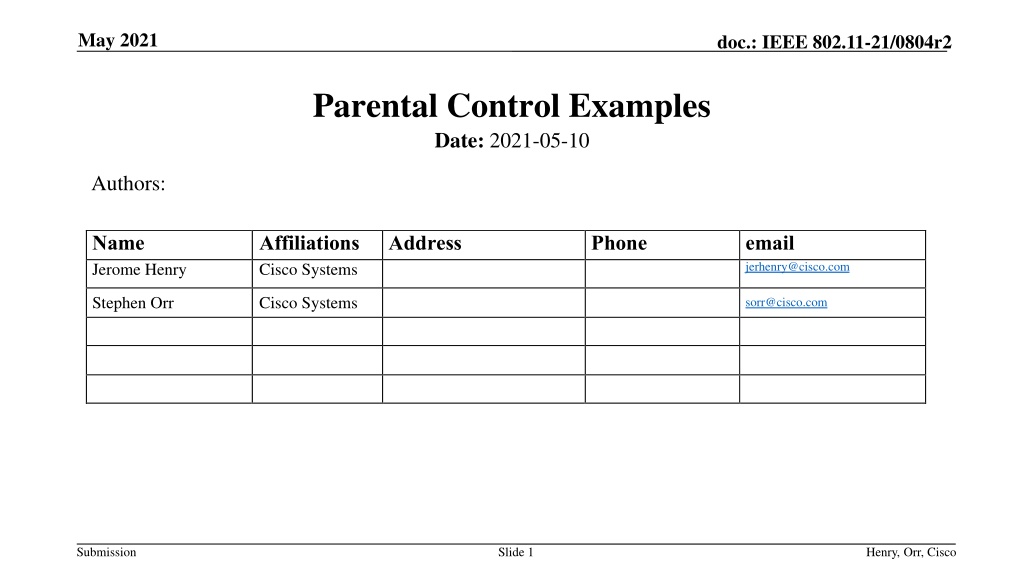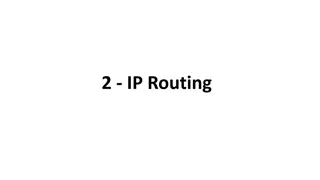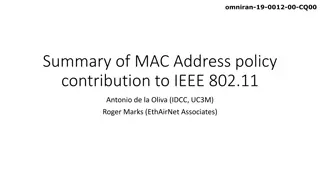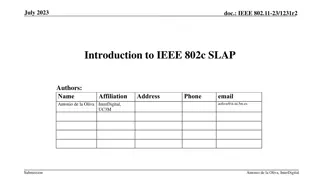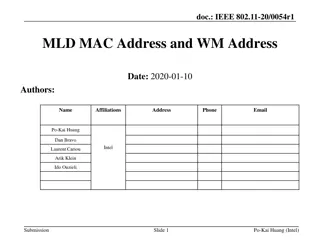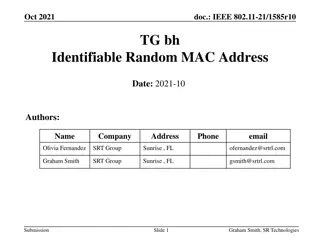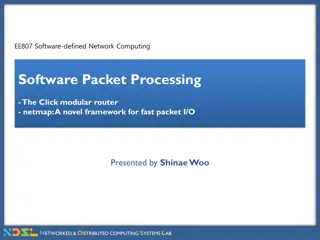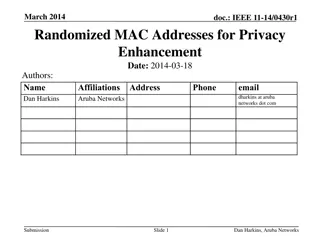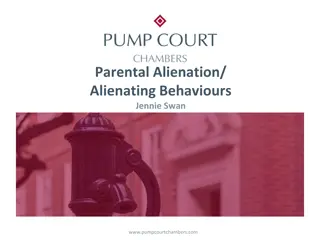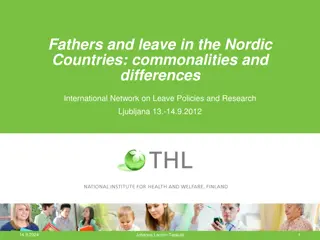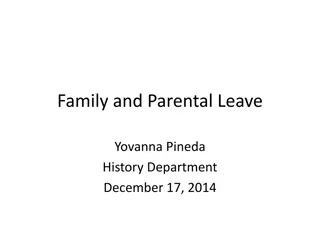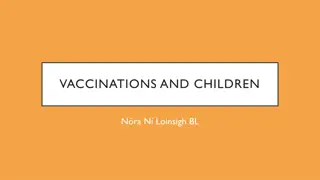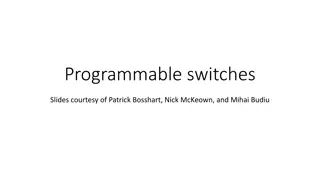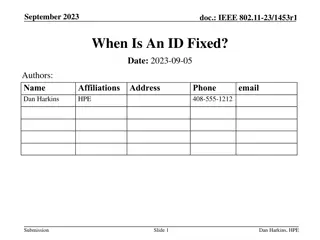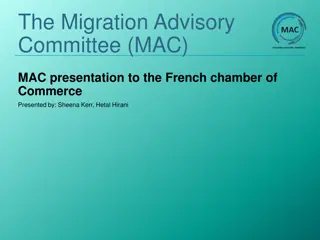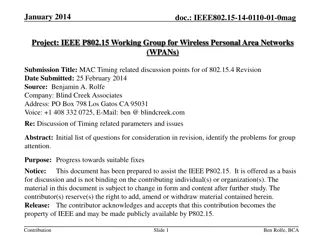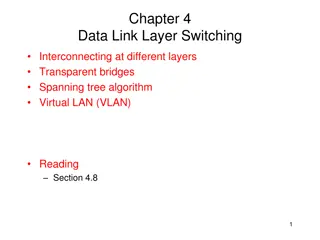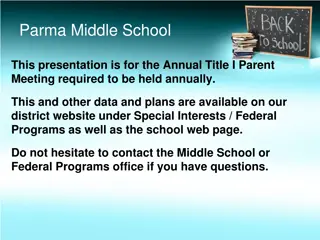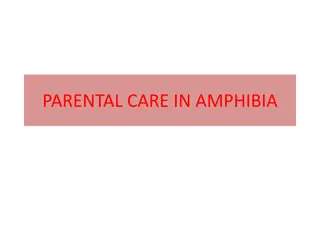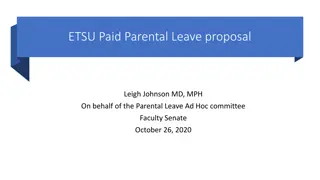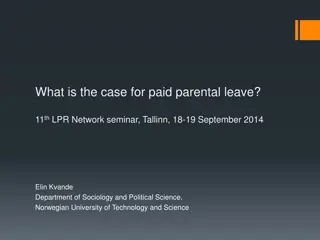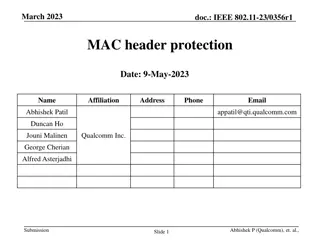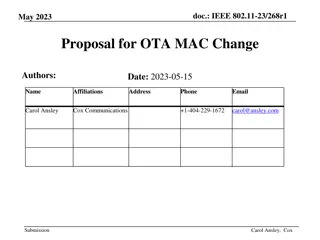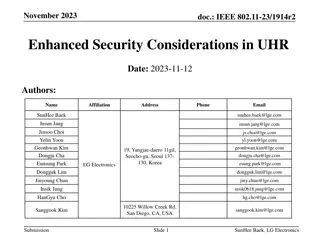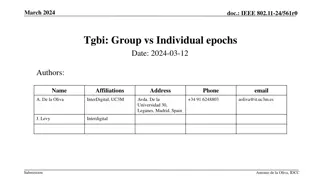Parental Control Based on MAC Address in Wi-Fi Routers
The document discusses the implementation of parental control features based on MAC addresses in home-brand wireless routers and enterprise-class access points. It highlights real-world examples and market prevalence of this functionality, emphasizing its presence in various Wi-Fi router brands. The examples include control mechanisms provided by Netgear, Google Nest, Linksys, TP-Link, as well as service providers like AT&T and Verizon.
Uploaded on Sep 30, 2024 | 0 Views
Download Presentation

Please find below an Image/Link to download the presentation.
The content on the website is provided AS IS for your information and personal use only. It may not be sold, licensed, or shared on other websites without obtaining consent from the author. Download presentation by click this link. If you encounter any issues during the download, it is possible that the publisher has removed the file from their server.
E N D
Presentation Transcript
May 2021 doc.: IEEE 802.11-21/0804r2 Parental Control Examples Date: 2021-05-10 Authors: Name Jerome Henry Affiliations Cisco Systems Address Phone email jerhenry@cisco.com Stephen Orr Cisco Systems sorr@cisco.com Submission Slide 1 Henry, Orr, Cisco
May 2021 doc.: IEEE 802.11-21/0804r2 Abstract In 802.11bh meeting on 04/12/2021, the case for parental control based on MAC address was examined. Members wondered if this case was real, i.e. existing in the real world, or was just a theoretical issue, or a glitch in some poorly-designed outlier brand of home router. It was suggested that providing a few real-world examples of such Parental control based on MAC address configuration structure would be useful to solidify the use case. This submission proposes such examples. Submission Slide 2 Henry, Orr, Cisco
May 2021 doc.: IEEE 802.11-21/0804r2 Finding Summary Parental control based on MAC address is massively present in the market Most home-brand wireless routers offer the function Most Service providers offer the function in their OEM wi-fi routers Most Enterprise-class AP vendors offer the function, typically more for classrooms than home contexts Software vendors are also present, USD 1 Billion market in 2919 (USA), CAGR 9.54% Submission Slide 3 Henry, Orr, Cisco Systems
May 2021 doc.: IEEE 802.11-21/0804r2 Parental Control Example, Home Brand From a Network Map view, on can set controls on a device (authorized URL list, time slices) Control is based on the MAC address Default is Control off - Netgear represents 21.9% of the home WiFi router market* *https://seekingalpha.com/article/4133274-this-wi-fi-company-is-potential-hit-for-2018 Submission Slide 4 Henry, Orr, Cisco
May 2021 doc.: IEEE 802.11-21/0804r2 Parental Control Example, Home Brand Google Nest Wi-Fi app (for control of Google WiFi points) Submission Slide 5 Henry, Orr, Cisco
May 2021 doc.: IEEE 802.11-21/0804r2 Parental Control Examples, Home Brands Linksys Wi-Fi routers TP-Link Wi-Fi routers Clients have names (DHCP option 12, Hostname), but the classifier is the MAC address Submission Slide 6 Henry, Orr, Cisco
May 2021 doc.: IEEE 802.11-21/0804r2 Parental Control Examples, SPs / OEM AT&T MF279 (ZTE base) Verizon (G3100) Submission Slide 7 Henry, Orr, Cisco
May 2021 doc.: IEEE 802.11-21/0804r2 Parental Control Examples, Enterprise Brands HPE Aruba Instant Features are usually richer, e.g. user role based on single MAC or range, then allowed time slots or URL targets based on role Target is more typically small businesses / schools Submission Slide 8 Henry, Orr, Cisco
May 2021 doc.: IEEE 802.11-21/0804r2 Parental Control Examples, Applications Requires a client on the child s device, a management part on the parent s device Not based on MAC (client calls to the management tool) Qustodio Submission Slide 9 Henry, Orr, Cisco
May 2021 doc.: IEEE 802.11-21/0804r2 Parental Control Adoption US numbers* In the U.K: 45%** Numbers seem consistent worldwide Clearly, some will use an app on the children s devices (MAC address may not be needed, but there is always the challenge of disabling the app) MAC-based parental control seems to be popular Source: * https://www.statista.com/statistics/232345/parental-control-over-childrens-media-consumption-in-the-us/ ** https://www.ofcom.org.uk/__data/assets/pdf_file/0023/190616/children-media-use-attitudes-2019-report.pdf Submission Slide 10 Henry, Orr, Cisco
May 2021 doc.: IEEE 802.11-21/0804r2 MAC-Based vs. app-based parental control Disclaimer: anecdotal, gathered from parental, SP support, and app vendor forums App-based Pros: granular control, easy to setup Cons: expensive, needs a client on each device, risk of start/stops Network-based (MAC-based) Pros: Usually free, easy to setup Cons: often more basic, easy to circumvent Submission Slide 11 Henry, Orr, Cisco Systems
May 2021 doc.: IEEE 802.11-21/0804r2 Straw Poll Should the informal tracking document also include use cases that have been identified for which we believe either the solution is outside our scope, or the solution already exists, and we will so comment on the use case? Straw poll results: Yes 25 No - 4 Abstain - 5 No answer - 23 Submission Slide 12 Henry, Orr, Cisco Systems
May 2021 doc.: IEEE 802.11-21/0804r2 Straw Poll Do you support keeping this general scenario as one of our use cases (with possible rewording): Consider a parent with children of ages 10 and 7 years. The parent wants to block access to the home 802.11 network and control access to Internet content based on the user of various devices. For example, the parent has a laptop and a smartphone, and the children each have an age-appropriate laptop and the older child has a smartphone. The parent wants all these devices to be recognized when attaching to the 802.11 network, without launching an application or using a portal. And, this needs to use a method that the kids can t hack and circumvent. When one of the childrens friends visits, their device(s) should be given only very limited access (if any at all) to the 802.11 network and Internet; thus unknown devices need to be distinguishable from one of the family s devices. Parental control offered in 802.11 routers is usually based on the MAC address of the device. Straw poll results: Yes No Abstain Submission Slide 13 Henry, Orr, Cisco Systems
